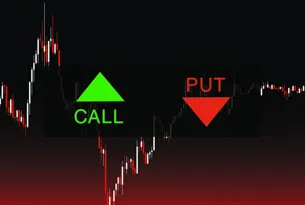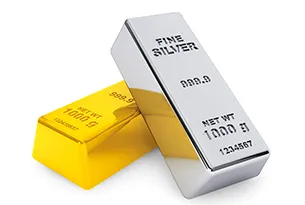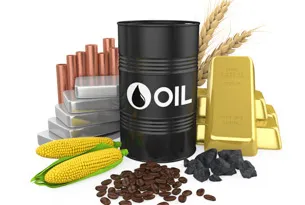A weak US dollar, not supply and demand factors, is the only reason why crude oil is trading near $100, explains Dan Gramza.
Dan Gramza is my guest. Dan, I’d like to talk to you about crude oil and natural gas. What’s going on in the energy sector?
A lot, actually. What I feel is some false ideas when we talk about, let’s say, crude oil.
We’ve seen crude oil approaching beyond $100, and that could possibly continue. My opinion is that crude oil shouldn’t be up here. The only reason it’s up here is because of the US dollar.
If we have a weaker dollar and you’re a country that produces crude oil, you get paid in US dollars because that’s how it’s priced. So you take that money—the US dollars—and you convert into your local currency. If the US dollar is weaker, that means you’re going to get less of your local currency.
So we need higher crude oil prices. Has crude oil been moving up because of lack of supply, or because demand is increasing? Not really at all.
If you look at the relationship between the dollar and crude, they’re almost moving hand in hand. However, going into the end of the year, I think we could be coming into some interesting times, and this relationship between the dollar and crude oil may be disengaging.
What we’ve seen over the last year or so is that this relationship has been very tight.
Lockstep.
That’s exactly right, lockstep. I’m not sure that’s going to be sustainable going forward.
If we see some of the positive results that we’re looking for, because there is another dimension here, and that is increase in demand. If we truly do see this as we go into year-end, we could see this disengagement between the dollar and the oil market moving higher.
Right now, we don’t have supply issues, I don’t think we have demand issues, and our refineries are operating around 80%. So we have plenty of room to work here.
The demand increase would be tied to global economic growth, and you don’t see that right now.
No, we don’t. I’m bullish on the market overall, but we haven’t seen enough to offset the supply issues.
Because that’s the other piece: we need to see supplies tight and demand increasing. We don’t have tight supplies, so can we absorb some of that increase in demand? I believe we can.
How about natural gas?
Nat gas, my gosh, that’s a good one, because we’ve seen tremendous changes in nat gas.
Just a few years ago we were at $11; right now we’re at $3.50 or $4.50, we’re in the lower range, and I think we’re getting near levels that we could find some buyers, but why are we seeing this?
We’re seeing this because of changes in technology. We’re seeing this ability to use fracking, which allows us to fracture not only vertically, but horizontally in these wells. It allows us to extract natural gas in ways that we’ve never been able to before.
What has that meant? If you look at some of the estimates, it means that theoretically, we have enough natural gas to supply our energy needs for 100 to 300 years, depending on who you’re talking to. We have tremendous amounts of natural gas in the United States.
See related: Big Opportunities in Natural Gas
What we don’t have are distribution systems. We don’t have things like we see with our friends in Canada, or Australia, or Romania. I was in Romania earlier this year; the taxi driver opens up his trunk and there is a natural gas tank.
We just don’t have that yet, but there are signs that’s changing in the United States. That has made a tremendous impact. Supply is very high.
The thing you want to remember about natural gas is 70% of it is used to generate power and also for industrial use. So 30% is what’s used to heat our homes, so there are other things that we can take a look at.
But you know, something else that is fascinating is that this technology that you and I are talking about for natural gas, people said “Hey, let’s try this in oil shale.”
Let’s go out to North Dakota, give it a try, and see if it’s going to work. Now I have to tell you, I thought that wouldn’t work for sure…
This is fracking, right?
This is fracking, because if you look at the oil shale—which I have some of that, it’s all very solid seams of just crude—the fact is it does work, and I was wrong.
It works so well that what we’re seeing right now—and this is just in a few years—there are 40,000 unfulfilled jobs in North Dakota. They have over a billion-dollar surplus in their state Treasury. That’s a lot different than we have in Illinois where I live!
It’s really a paradigm shift. In the next five to ten years, you and I have the potential to see our energy dependence cut in half from foreign oil.
How about some of the complaints about the contamination of groundwater and well water with fracking? Will that be addressed, do you think?
That’s a wonderful point you’re raising. Now to do that, we’ve got to back out east; we’ve got to look at the Marcellus shale area from New York, Ohio, that area in there.
There have been some areas where people say “We’ve got our water and we can light it now! What’s going on with that?”
First, there haven’t been any incidents that we’ve been able to identify or that have been identified to show that fracking caused that problem.
Here’s what you want to remember: there’s the ground surface, and below there we have the aquifer. The fracking occurs thousands of feet below that in solid rock. This connection between the two, they’re wondering how that can happen.
Now in some parts of our country we have natural formations where natural gas can seep into the water supply, so is that a natural thing that’s occurring, or has someone drilled a well, and if they did an improper job, then maybe that could leak into there.
There hasn’t been any sign of that happening, so it’s definitely something that takes a further, closer look. Right now we haven’t seen an actual connection between those two, but I think those are all solvable issues as we go forward.
Related Reading:




































